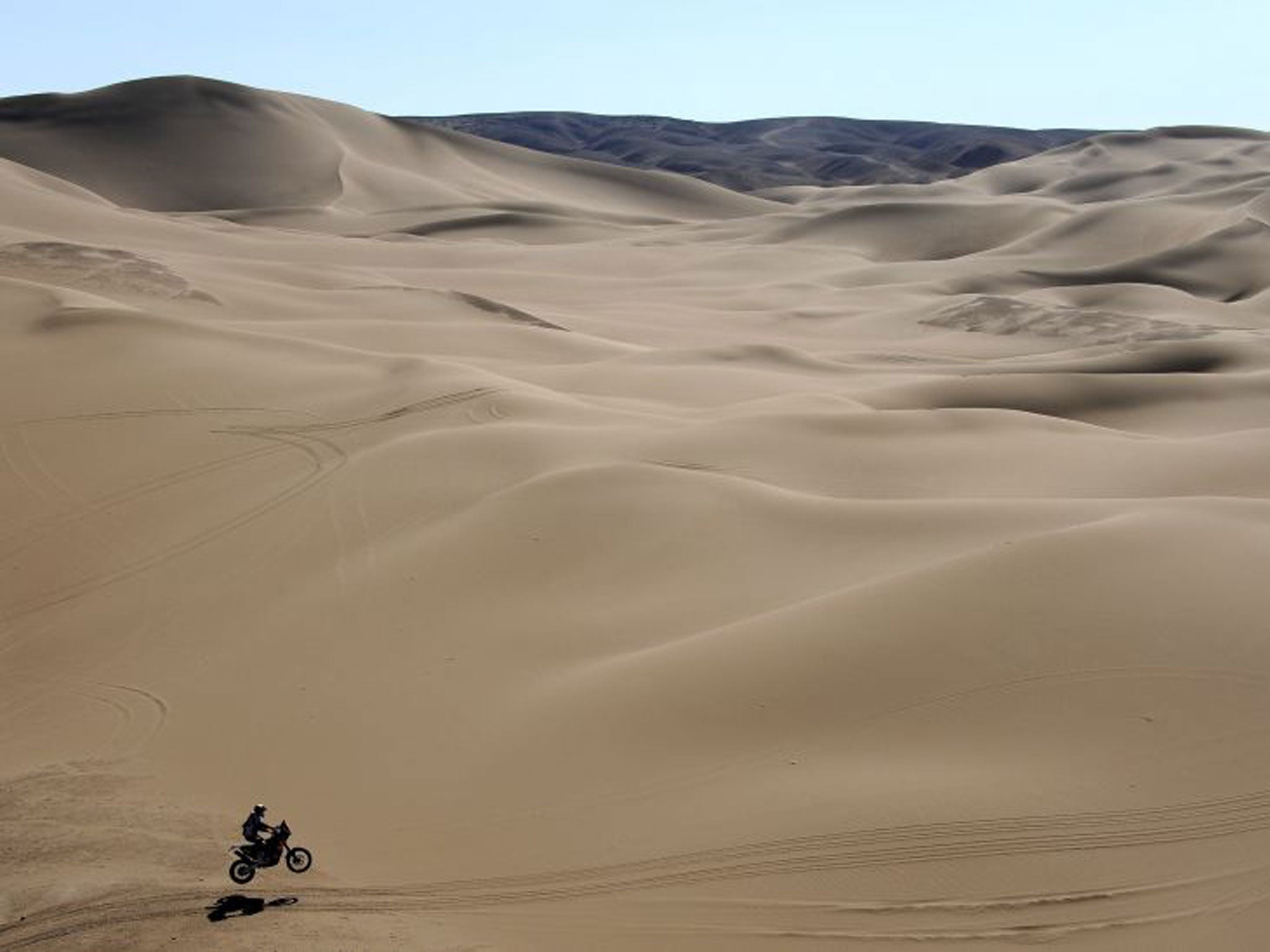The Dakar Rally: Get set for the maddest race on Earth
The sands of time have not eroded the spirit of adventure which drives a race that delivers as much pain as pleasure

Your support helps us to tell the story
From reproductive rights to climate change to Big Tech, The Independent is on the ground when the story is developing. Whether it's investigating the financials of Elon Musk's pro-Trump PAC or producing our latest documentary, 'The A Word', which shines a light on the American women fighting for reproductive rights, we know how important it is to parse out the facts from the messaging.
At such a critical moment in US history, we need reporters on the ground. Your donation allows us to keep sending journalists to speak to both sides of the story.
The Independent is trusted by Americans across the entire political spectrum. And unlike many other quality news outlets, we choose not to lock Americans out of our reporting and analysis with paywalls. We believe quality journalism should be available to everyone, paid for by those who can afford it.
Your support makes all the difference.Alove of mystery and a sense of wonder at desert landscapes are the mother and father of the Dakar Rally, the maddest challenge on two or four wheels. The setting has shifted from North Africa to South America since the inaugural event from Paris to Senegal 34 years ago, but the spirit of adventure that coursed through the veins of its founder, Thierry Sabine, remains.
More than five hundred unhinged enthusiasts, plus an army of support staff and medics, will fire up their bikes, cars and trucks in Lima today at the start of a 5,000 mile, two-week trek across sand and peak down to Santiago. There is no Charley Boorman, a celebrity entrant in 2006, but former world rally champion Carlos Sainz returns for the first time since his victory in 2010 to contest the event in a re-inforced buggy.
The race begins in the Peruvian sand dunes. While the desert is a central feature of the experience, never before has the start line been drawn in the sand. It is the rally's fifth year in South America, a move triggered by the murder of four French citizens and three soldiers in Mauritania, which led to the scrap ping of the 2008 event.
The competitors are bound by a love of adventure, and the spirit of Sabine ensures that the common or garden garagista, who assembles his chariot behind the garden shed, is able to run against the works heavyweights and the enviable resources of the adrenalin junkies at Red Bull. Sabine lost his life in a helicopter crash during the 1986 event, one of five victims on board. His ashes were scattered in the Sahara, the timeless, shifting landscape that fired his imagination to race.
Three years earlier in the Ténéré, a part of the Sahara that claims the northern half of Niger, 40 drivers spent four days going around in circles when a sandstorm separated them from their bearings. Fresh from his success in Long Way Round, the motorcycle road trip with actor Ewan McGregor, Boorman lasted five days before a crash forced his withdrawal seven years ago.
"I'd fallen into an old riverbed and was trapped under the bike. It was at a time of day when other truck and car racers were catching up. I was in their path and they don't always want to stop at 100mph. I got up and tried to push the bike but my fingers felt like crisp packets. My hands were hurting but I could sort of ride, so I carried on for 250 miles to the next overnight stop. The doctor there took an X-ray, turned to me and said, 'Charley, not only are you not going to be able to carry on in the rally, I'm not sure you're even going to be able to pull your boots on'.
"When you are traveling with the aircraft, you see the four or five people airlifted out daily with crushed bodies, head injuries, internal bleeding, spleens, pelvis', legs, arms and they never tell you about that. Most of the time when you're out, you're injured, and maybe that's why they have the fifty-two doctors and nurses".
The challenge in 2013 is no less great following the Andes down the west coast of South America from Peru to Chile via Argentina. Just getting to the start line has been tricky, with more than 700 vehicles, including support trucks, having made a three-week transatlantic crossing aboard the Rio Imperial from Le Havre. Apart from the odd flat battery and deflated tyre, all made it to parc fermé in Lima for today's grand depart.
Good luck!
Join our commenting forum
Join thought-provoking conversations, follow other Independent readers and see their replies
Comments